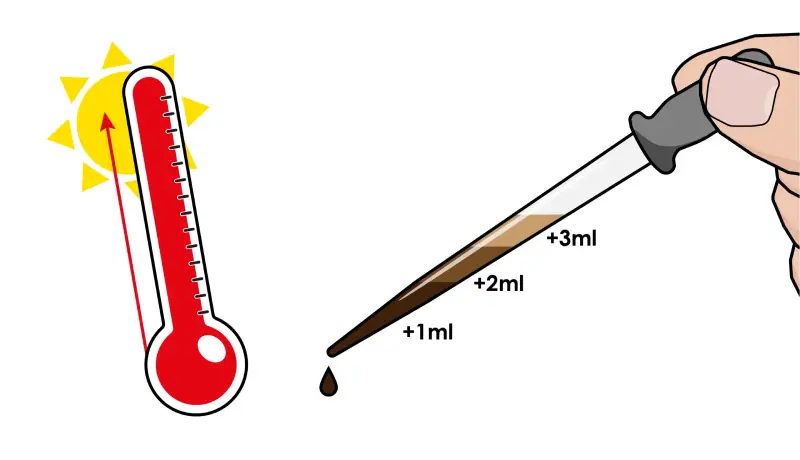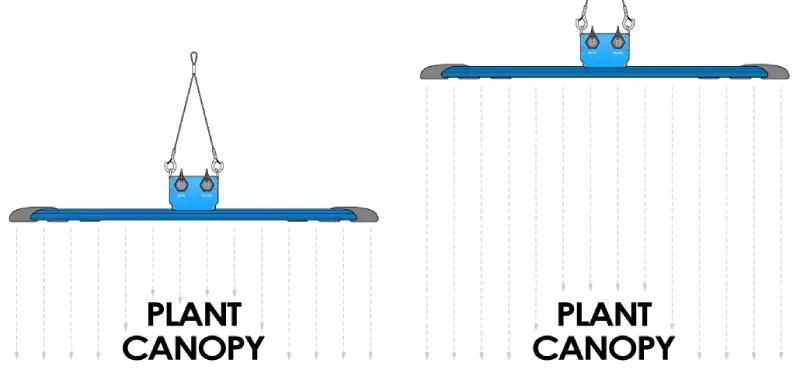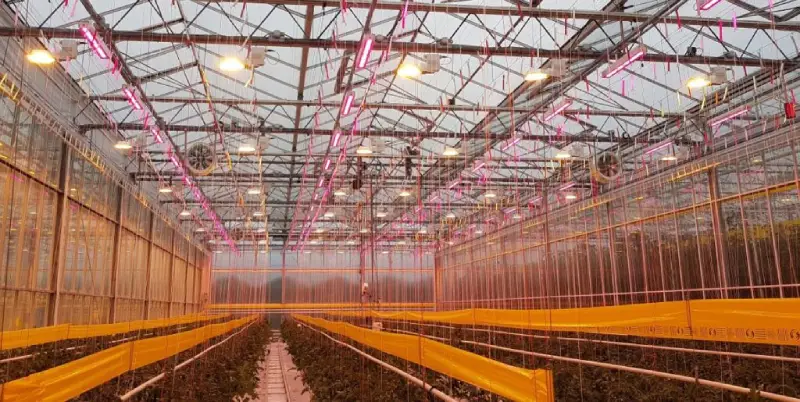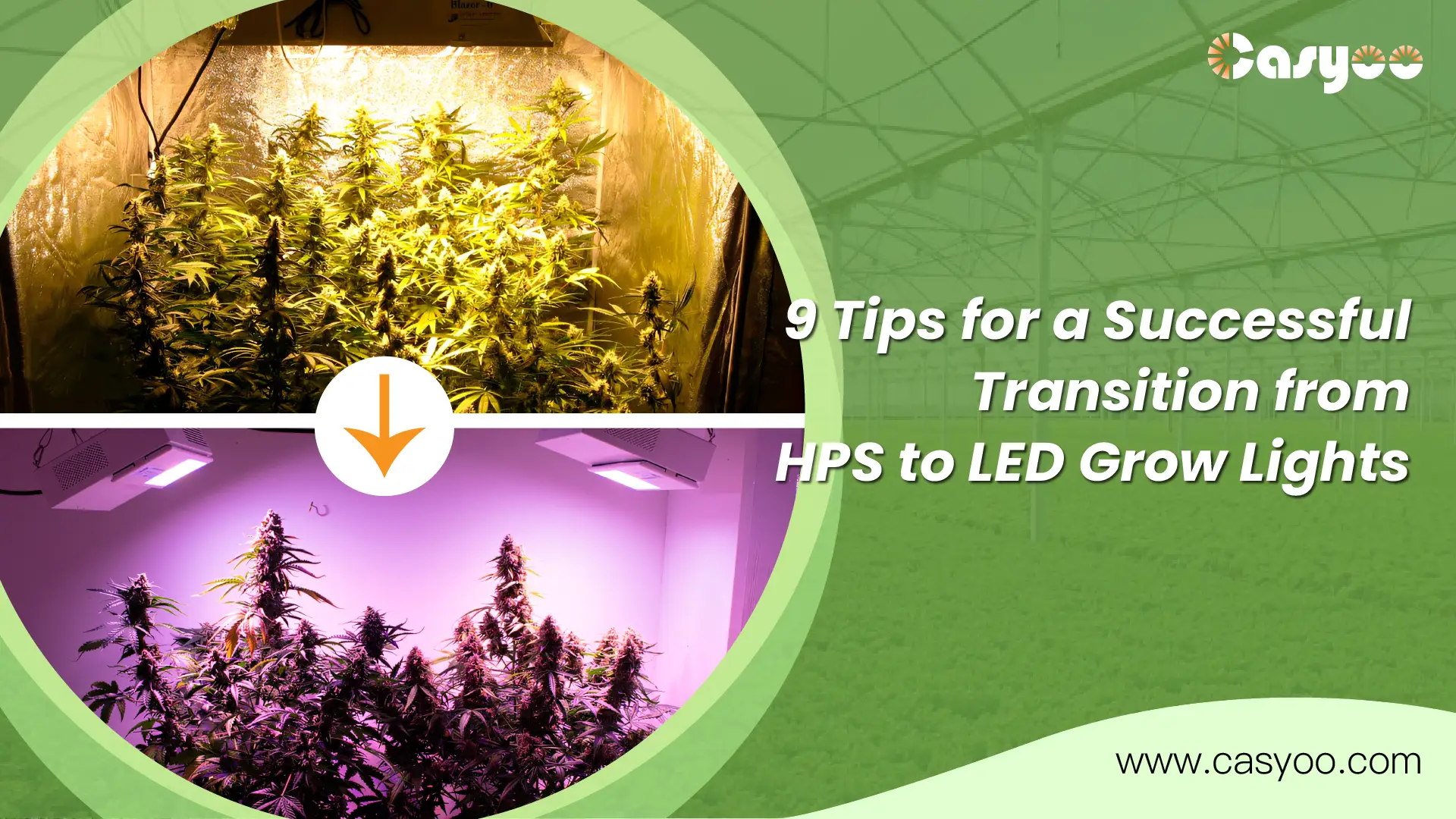HPS lights have long been considered the industry standard for lighting in horticultural applications. HPS is so widely used that many greenhouses and indoor setups are designed specifically to accommodate HPS lighting systems. In the past five years, LED grow lights have gained a lot of attention in the horticultural community. HPS VS LED, it is undeniable that LED has many advantages over HPS lighting, such as less energy consumption and longer life. So more and more growers are switching from HPS to LED technology.
Today, we will talk about how to seamlessly transition from HPS to LED grow lights.
How to Transition from HPS to LED
1. Regulate the Temperature of Your Grow Room

You may need to invest heating equipment to raise the temperature of your grow room in the winter because LED grow lights generate heat differently than HPS fixtures. HPS grow lights emit approximately 80% of their energy as heat, so the temperature of your grow room will naturally rise. LED grow lights emit less heat than HPS ones. So growers who have historically relied on the heat from HPS lamps to reduce their heating costs will need to make up for it during the winter.
2. Take Advantage of Increased Light Intensity

As I mentioned before, HPS fixtures emit a lot of heat, preventing growers from putting the lights too close to their plants. This typically limits the maximum light intensity that plants receive. Since LED grow lights emit less heat than HPS, growers can place them closer to the crops. This means growers can offer more photons to the crops without burning them, driving maximum growth.
3. More Dehumidification
One thing you’ll need to do when transitioning from HPS to LEDs is dehumidify. LED grow lights are generally more efficient than HPS at converting electrical energy into light energy, and they produce less heat, so your air conditioner or fans don’t have to work as hard to maintain a given air temperature. You may find that your grow room environment becomes more humid, especially in the second half of the life cycle, when plants are larger and transpiring more. Therefore, you may need to invest in dehumidification equipment to directly offset high humidity levels. This is especially true for sealed rooms with elevated CO2 levels.
4. Add Ddditional Infrastructure
You may need to purchase some additional infrastructure such as wiring, tracks, or trusses to hang your LED fixtures, as there is no one-to-one replacement for HPS to LEDs. You may need 2-3 LEDs per HPS fixture. HID lights use reflectors to create a wide, diffused lighting area over the plants. Since LED fixtures don’t have reflectors, they produce a more directional, more concentrated light distribution, which means you’ll need more fixtures to produce the same uniformity across your plants.
5. Consider Hybrid Lighting

Hybrid lighting setups for growers who want to benefit from both technologies at the same time are a go-to solution. When using a hybrid LED and HPS application, this combination provides the best balance between diffuse light distribution and optimal spectra. It gives you the freedom to take advantage of HPS lighting’s radiant heating properties while also enabling LED lights to continue using supplemental light well into spring when daylight hours and outside temperatures rise. By utilizing their current infrastructure, farmers can control costs and save initial capital expenditures by implementing a hybrid lighting system.
6. HPS VS LED: Effect of Spectrum on Plant Growth
High pressure sodium grow lights emits far-red, red, and yellow light. This spectrum causes plants to grow taller with thinner stems and leaves. LED grow lights contain blue, green, yellow, and red light to emit a more balanced spectrum than HPS. The result is a sturdier crop with thicker stems and broad leaves. Keep these differences in mind when planning your switch from HPS to LED grow lights.
7. Still need Regular maintenance on LED grow lights
HPS VS LED, LEDs have a longer lifespan than HPS fixtures, up to 50,000 to 100,000 hours. However, you still need to perform regular maintenance and cleaning to keep them in optimal working condition and ensure you receive the maximum amount of light. Just like HPS fixtures, dirt and dust can still accumulate on the LED lens, which can reduce the performance of the fixture. To clean LED grow lights, avoid wiping with a wet rag, which will reduce the lifespan, and just use a dry rag or dust brush to gently sweep over the lens to remove any dust.
8. Improving Space Utilization
When transitioning from HPS to LED, consider reducing your growing space. The low heat and spectral advantages of LED grow lights allow plants to thrive in smaller spaces, thereby improving your growing space utilization.
9. Watering Schedule Adjustment
HPS VS LED, LED lights produce less heat, which reduces plant water evaporation by 50%. You won’t have to water as often.
A Few Things to Keep in Mind When Switching from HPS to LED Grow Lights
- Adjusting your growing environment (temperature, humidity, CO2, watering, and nutrients) is critical to helping your plants take advantage of the extra light intensity.
- More hours of light are not always better. If plants can’t use the extra photons efficiently, the added light energy can cause oxidative damage to the plant’s photosynthetic machinery, reducing the plant’s ability to photosynthesize.
- Optimize your growing parameters for planting with LED grow lights. This helps avoid metabolic bottlenecks that lead to photoinhibition and helps promote fast, healthy growth.
- Monitor light intensity. Since LED grow lights are usually closer to the crop canopy than HPS, you will need to observe your plants for signs of burn or it is recommended to use a PAR meter to measure PPFD at the canopy.
HPS VS LED: 9 Reasons Why You Should Switch to LED
1. Better Yields and Product Quality
LED grow lights have a full light spectrum which guarantees your plants get the precise amount of light they require at each growth stage. Furthermore, you can influence your crop by changing the light spectrum if you utilize variable spectrum LED grow lights.
2. Less Energy
LED grow lights just need a portion of the wattage of HPS lights to get the same results. Compared to HPS grow lights, LED grow lights can save you up to 50%. Furthermore, passive cooling is a common feature of LED grow lights, meaning that active cooling systems are not necessary.
3. Better Light Spectrum
The red and blue light emitted by HPS grow lights, which aid in plant growth, is not enough. For this reason, farmers may need to use MH bulbs during the veg stage. However, with the advent of LED grow lights, fixtures no longer need to be changed and you only need a grow light. All you have to do is adjust the grow light’s spectrum to suit the growth stage.
4. More Uniform Light
Because of the extreme limitations of HPS technology in terms of light distribution, there will be areas that receive noticeably more light than others. Conversely, LEDs evenly distribute PPFD levels throughout the light’s footprint, with little losses as it extends outward.
5. Last Longer
LED grow lights are more cost-effective over time. An LED grow light’s significantly longer lifespan is one of the main ways to save money. The lifespan of high-end LED grow lights can reach 50,000 hours to 100,000 hours. The lumen depreciation is little. Usually, HPS bulbs need to be replaced every 5,000 hours to preserve the light output and spectrum.
6. Safer
The ballast of an HPS bulb is powered by a voltage ranging from 2500 to 4000 V. This is required to spark across the gap and ignite the gas inside the tube. After that, the voltage drops to about 230 V, which is the HPS light’s typical operating voltage. LED grow lights operate in the grow room at voltages lower than 100V, frequently as low as 24V. A low, secure voltage is suitable for the grow room’s water and plant surroundings.
7. Less Heat
The fact that LED grow lights produce less heat than HPS lights is another benefit. Reduced heat emission creates a more comfortable growing environment, which helps maximize plant growth. Grow tent users who utilize HPS lighting typically have trouble with heat and use cooling devices to dissipate the heat.
8. Easy to Setup
LED lights usually feature plug-and-play functionality and built-in drivers are common features of LED grow lights. You just need to hang it and plug it in. Hanging LED grow lights in smaller grow tents won’t be an issue because they produce less heat.
9. Better for the Environment
A mercury-containing HPS bulb needs to be disposed of carefully because it is extremely hazardous to the environment. Changing HPS bulbs every few years releases a large amount of harmful waste into the environment. By switching to LED, you may avoid having to dispose of hazardous materials and ensure that your light fixture won’t need to be replaced for at least 50,000 hours.
Common Questions About Switching to LED
Can I use my existing HPS ballasts with LED?
LED lamps need new specialty drivers rather than existing HPS ballasts since technical specifications between LEDs and these ballasts create compatibility issues. HPS ballasts heavily energize high-pressure sodium lamps whereas LED lamps require their own specialty drivers to achieve maximum efficiency.
Are LED grow lights dimmable like HPS?
Yes, LED plant growing lights not only do support dimming but also far surpass HPS lamps in their dimming capability. LED light apparatus allows for precise control of dimming that follows exactly the plants’ lighting needs at the different stages of their growth. The dimming function of LED fixtures also reduces power consumption so it is energy and operating cost saving.
What’s the payback period for transitioning?
The payback period for an upgrade to LED plant growth light is determined based on some assumptions such as the wattage of current lamps, cost of electricity, and efficiency of the LED lamps. What follows is an approximate calculation:
|
Parameter |
HPS |
LED |
Savings |
|
Power consumption (W) |
1000 |
600 |
400 |
|
Daily use time (hours) |
12 |
12 |
/ |
|
Annual power consumption (kWh) |
4380 |
2628 |
1752 |
|
Electricity cost (USD/kWh) |
0.1 |
0.1 |
/ |
|
Annual electricity cost savings (USD) |
/ |
/ |
175.2 |
For example, if the cost of the LED luminaire is 500 USD, then the payback period is:
500 USD / 175.20 USD/y ≈ 2.85 year
About Us
For the past 17 years, we have been committed to researching LED grow lights and improving quality LED lighting solutions for our customers at home and abroad. Contact us today to seamlessly switch from HPS lights to LED grow lights.




